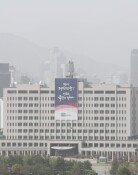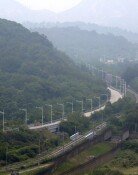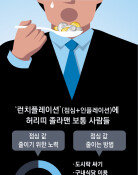Samsung founder’s Tokyo Declaration selected as highlight of Korean businesses
Samsung founder’s Tokyo Declaration selected as highlight of Korean businesses
Posted December. 09, 2019 07:35,
Updated December. 09, 2019 07:35
“You are known to have almost religious tenacity for the semiconductor industry. Could you explain what started it?” To the question by a Dong-A Ilbo reporter during an interview in November 1985, Lee Byung-chul, the founder of the Samsung Group, answered as below. “Dr. Inaba Hidejo, whom I met in Japan, said, ‘The future industries will depend on the semiconductor. The lighter, thinner, shorter, and smaller semiconductor should be developed.’ I was in the U.S. in 1982 and felt like the longer we wait to start the semiconductor business the more delayed it would be. So I called the headquarters from the states to begin preparation for the business.”
On February 8, 1983, the founder announced a large investment in very-large-scale integration (VLSI), which was cutting-edge technology in the semiconductor field. This is famously known as the “Tokyo Declaration” now. Then, Samsung was barely able to handle large-scale integration (LSI) so Intel ridiculed Samsung for being “delusional.”
“I thought mistakes would lead to losing half of the Samsung Group. However, I made my mind on the belief that no one else but Samsung can take on such a challenge,” said Lee during the 1985 interview. The South Korean electronics giant has been leading the industry for 27 years ever since it took the No. 1 position in the world for the DRAM in 1992.
The Tokyo Declaration was selected as the highlight among the “quantum jump moments of the 100 years of South Korean businesses,” which were picked by the Dong-A Ilbo and 30 external advisors, including professors in the fields of business, economics, science, and engineering, former government officials, and heads of economic research centers, to celebrate the 100th anniversary of the newspaper publisher’s foundation in 2020.
The No. 2 and No.3 moments were the outsets of the steel and automobile industries, respectively, which are holding up the South Korean economy. To be specific, they were the moment of POSCO’s ship that produced the first batch of molten metal sailing out on June 9, 1973 and the launch of the Hyundai Pony, the first passenger car independently developed by South Korea, in 1976.
kimhs@donga.com · salthj@donga.com







